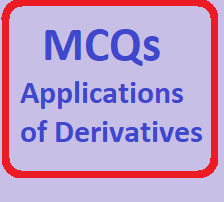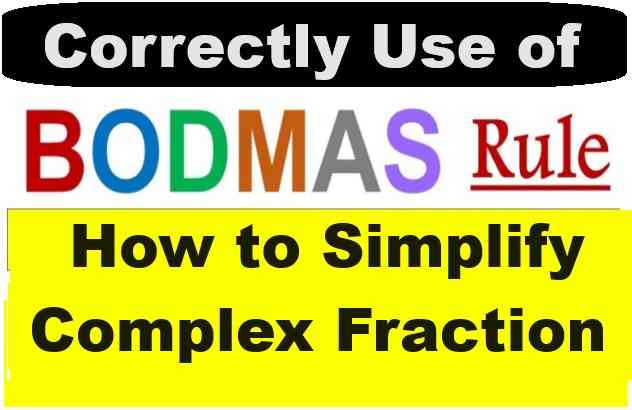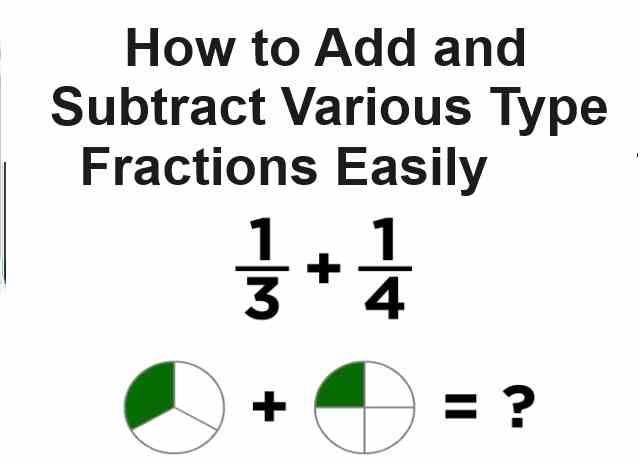Applications of Derivatives MCQ for ISC Class-12 Maths .These MCQ / Objective Type Questions is based on latest reduced syllabus according 2021-22 session on bifurcated pattern. Main motto of MCQ Type Question is cracking the next upcoming exam of council. Visit official website CISCE for detail information about ISC Board Class-12 Physics.
ISC Class-12 Maths , Applications of Derivatives MCQ Type Questions
| Board | ISC |
| Class | 12th (XII) |
| Subject | Maths |
| Ch-Name | Applications of Derivatives |
| Syllabus | on bifurcated syllabus (after reduction) |
| Bifurcated pattern |
Semester-1 |
| Session | 2021-22 |
| Topic | MCQ / Objective Type Question |
Applications of Derivatives MCQ Type Questions for ISC Class-12 Maths
Question 1: If f and g are differentiable functions on [0, 1] satisfying f(0) = 2 = g(l), g(0) = 0 and f(1) = 6, then for some c ∈ ] 0, 1 :
(a) 2f'(c) = 3g'(c)
(b) f'(c) = g'(c)
(c) f'(c) = 2g'(c)
(d) 2f'(c) = g'(c).
Answer: (c) f'(c) = 2g'(c)
Question 2: Twenty metres of wire is available for fencing off a flower-bed in the form of a circular sector. Then the maximum area (in sq. m) of the flower bed is:
(a) 25
(b) 30
(c) 12.5
(d) 10.
Answer: (a) 25
Question 3: Find all the points of local maxima and local minima of the function f(x) = (x – 1)3 (x + 1)2
(a) 1, -1, -1/5
(b) 1, -1
(c) 1, -1/5
(d) -1, -1/5
Answer: (a) 1, -1, -1/5
Question 4: The total revenue in ₹ received from the sale of x units of an article is given by R(x) = 3x² + 36x + 5. The marginal revenue when x = 15 is (in ₹ )
(a) 126
(b) 116
(c) 96
(d) 90
Answer: (a) 126
Question 5: The point(s) on the curve y = x², at which y-coordinate is changing six times as fast as x-coordinate is/are
(a) (2, 4)
(b) (3, 9)
(c) (3, 9), (9, 3)
(d) (6, 2)
Answer: (b) (3, 9)
Question 6: The sides of an equilateral triangle are increasing at the rate of 2cm/sec. The rate at which the are increases, when side is 10 cm is
(a) 10 cm²/s
(b) √3 cm²/s
(c) 10√3 cm²/s
(d) 10/3 cm²/s
Answer: (c) 10√3 cm²/s
Question 7: A ladder, 5 meter long, standing oh a horizontal floor, leans against a vertical wall. If the top of the ladder slides downwards at the rate of 10 cm/sec, then the rate at which the angle between the floor and the ladder is decreasing when lower end of ladder is 2 metres from the wall is
(a) 1/10 radian/sec
(b) 1/20 radian/sec
(c) 20 radiah/sec
(d) 10 radiah/sec
Answer: (b) 1/20 radian/sec
Question 8: The curve y – x1/5 at (0, 0) has
(a) a vertical tangent (parallel to y-axis)
(b) a horizontal tangent (parallel to x-axis)
(c) an oblique tangent
(d) no tangent
Answer: (b) a horizontal tangent (parallel to x-axis)
Question 9: The equation of tangent to curve y = e–|x| at the points where the curve cuts the line x = 1 is
(a) x+ y = e
(b) e (x + y) = 1
(c) y + ex = 1
(d) None of these
Answer: (d) None of these
Question 10: The number of roots of x3– 3x + 1 = 0 in [1, 2] is
(a) One
(b) Two
(c) Three
(d) None of these
Answer: (a) One
Question 11: Let h(x) = f(x) – [f (x)]2 + [f (x)]3 for every real number x. Then
(a) h is increasing whenever f is increasing
(b) h is increasing whenever f is decreasing
(c)h is decreasing whenever f is increasing
(d) Nothing can be said in general
Answer: (a) h is increasing whenever f is increasing
Question 12: Let y = |x| + |x – 2|, then dy/dx at x = 2
(a) 2
(b) 0
(c) Does not exist
(d) None of these
Answer: (c) Does not exist
Question 13: The number of solutions of equations 3x2 + xsinx + cosx = 0
(a) 3
(b) 2
(c) 1
(d) 0
Answer: (d) 0
Question 14: The maximum value of (1/x)x is
(a) (1/e)1/e
(b) (e)2/e
(c) (e)-1/e
(d) (e)1/e
Answer: (d) (e)1/e
Question 15: The global maximum and global minimum of f (x) = 2x3 – 9x2 + 12x + 6 in [0, 2]
(a) (11, 6)
(b) ( 6,11)
(c) ( -6,11)
(d) ( -11, 6)
Answer: (a) (11, 6)
Question 16: The real number k for which the equation 2x³ + 3x + k = 0 has two distinct real roots in [0,1]:
(a) lies between 2 and 3
(b) lies between -1 and 0
(c) does not exist
(d) lies between 1 and 2.
Answer: (c) does not exist
Question 17: The point on the curve y² = x, where the tangent makes an angle of π/4 with x-axis is:
(a) (1/2, 1/4)
(b) (1/4, 1/2)
(c) (4, 2)
(d) (1, 1).
Answer: (b) (1/4, 1/2)
Question 18: The equation of the normal to the curve y = sin x at (0, 0) is
(a) x = 0
(b) y = 0
(c) x + y = 0
(d) x – y = 0.
Answer: (c) x + y = 0
Question 19: Find the maximum profit that a company can make, if the profit function is given by P(x) = 41 + 24x – 18x2.
(a) 25
(b) 43
(c) 62
(d) 49
Answer: (d) 49
Question 20: If y = x3 + x2 + x + 1, then y
(a) has a local minimum
(b) has a local maximum
(c) neither has a local minimum nor local maximum
(d) None of these
Answer: (c) neither has a local minimum nor local maximum
Question 21: Find both the maximum and minimum values respectively of 3x4 – 8x3 + 12x2 – 48x + 1 on the interval [1, 4].
(a) -63, 257
(b) 257, -40
(c) 257, -63
(d) 63, -257
Answer: (c) 257, -63
Question 22: It is given that at x = 1, the function x4 – 62x2 + ax + 9 attains its maximum value on the interval [0, 2]. Find the value of a.
(a) 100
(b) 120
(c) 140
(d) 160
Answer: (b) 120
Question 23: The equation of the normal to the curve y = sin x at (0, 0) is
(a) x = 0
(b) y = 0
(c) x + y = 0
(d) x – y = 0
Answer: (c) x + y = 0
Question 24: The line y = x + 1 is a tangent to the curve y2 = 4x at the point
(a) (-1, 2)
(b) (1, 2)
(c) (1, -2)
(d) (2, 1)
Answer: (b) (1, 2)
Question 25: The curves y = ae-x and y = bex are orthogonal if
(a) a = b
(b) a = -b
(c) ab = -1
(d) ab = 1
Answer: (d) ab = 1
Question 26: If the curves ay + x2 = 7 and x3 = y cut orthogonally at (1,1), then the value of a is
(a) 1
(b) 0
(c) -6
(d) 6
Answer: (d) 6
Question 27: The equation of normal to the curve 3x² – y² = 8 which is parallel to the line ,x + 3y = 8 is
(a) 3x – y = 8
(b) 3x + y + 8 = 0
(c) x + 3y ± 8 = 0
(d) x + 3y = 0
Answer: (c) x + 3y ± 8 = 0
Question 28: If y = x4 – 10 and if x changes from 2 to 1.99 what is the change in y
(a) 0.32
(b) 0.032
(c) 5.68
(d) 5.968
Answer: (a) 0.32
Question 29: The points at which the tangents to the curve y = x² – 12x +18 are parallel to x-axis are
(a) (2, – 2), (- 2, -34)
(b) (2, 34), (- 2, 0)
(c) (0, 34), (-2, 0)
(d) (2, 2),(-2, 34).
Answer: (d) (2, 2),(-2, 34).
Question 30: The function f(x) = x5 – 5x4 + 5x3 – 1 has
(a) one minima and two maxima
(b) two minima and one maxima
(c) two minima and two maxima
(d) one minima and one maxima
Answer: (d) one minima and one maxima
Question 31: The area of a right-angled triangle of the given hypotenuse is maximum when the triangle is
(a) scalene
(b) equilateral
(c) isosceles
(d) None of these
Answer: (c) isosceles
Question 32: Find the area of the largest isosceles triangle having perimeter 18 metres.
(a) 9√3
(b) 8√3
(c) 4√3
(d) 7√3
Answer: (a) 9√3
Question 33: The absolute maximum value of y = x3 – 3x + 2 in 0 ≤ x ≤ 2 is
(a) 4
(b) 6
(c) 2
(d) 0
Answer: (a) 4
Question 34: The tangent to the curve y = e2x at the point (0, 1) meets x-axis at
(a) (0, 1)
(b) (-1/2, 0)
(c) (2, 0)
(d) (0, 2)
Answer: (b) (-1/2, 0)
Question 35: 2x3 – 6x + 5 is an increasing function, if
(a) 0 < x < 1
(b) -1 < x < 1
(c) x < -1 or x > 1
(d) -1 < x < −1/2
Answer: (c) x < -1 or x > 1
Question 36: The slope of the tangent to the curve x = a sin t, y = a{cot t + log(tan t/2)} at the point ‘t’ is
(a) tan t
(b) cot t
(c) tan t/2
(d) None of these
Answer: (a) tan t
Question 37: The equation of the normal to the curves y = sin x at (0, 0) is
(a) x = 0
(b) x + y = 0
(c) y = 0
(d) x – y = 0
Answer: (b) x + y = 0
Question 38: The interval on which the function f (x) = 2x³ + 9x² + 12x – 1 is decreasing is
(a) [-1, ∞]
(b) [-2, -1]
(c) [-∞, -2]
(d) [-1, 1]
Answer: (b) [-2, -1]
Question 39: Let the f: R → R be defined by f (x) = 2x + cos x, then f
(a) has a minimum at x = 3t
(b) has a maximum, at x = 0
(c) is a decreasing function
(d) is an increasing function
Answer: (d) is an increasing function
Question 40: The maximum and the minimum value of 3x4 – 8x3 + 12x2 – 48x + 1 on the interval [1,4]
(a) -40,257
(b) -48,258
(c) -49,258
(d) -58,257
Answer: (a) -40,257
Question 41: Find the maximum and minimum values of f (x) = 2x3 – 24x + 107 in the interval [1, 3].
(a) 89, 69
(b) 89, 75
(c) 59, 56
(d) 89, -9
Answer: (b) 89, 75
Question 42: The radius of air bubble is increasing at the rate of 0. 25 cm/s. At what rate the volume of the bubble is increasing when the radius is 1 cm.
(a) 4π cm3/s
(b) 22π cm3/s
(c) 2π cm3/s
(d) π cm3/s
Answer: (d) π cm3/s
Question 43: The total revenue in Rupees received from the sale of x units of a product is given by R(x) = 5x2 + 22x + 35. Find the marginal revenue, when x = 7, where by marginal revenue we mean the rate of change of total revenue with respect to the number of items sold at an instant
(a) Rs 7
(b) Rs 127
(c) Rs 92
(d) Rs 48
Answer: (c) Rs 92
Question 44: Find a point on the curve y = (x – 2)2. at which the tangent is parallel to the chord joining the points (2, 0) and (4, 4).
(a) (3, 1)
(b) (4, 1)
(c) (6,1)
(d) (5, 1)
Answer: (a) (3, 1)
Question 45: Tangents to the curve x2 + y2 = 2 at the points (1, 1) and (-1, 1) are
(a) parallel
(b) perpendicular
(c) intersecting but not at right angles
(d) none of these
Answer: (b) perpendicular
Question 46: If there is an error of 2% in measuring the length of a simple pendulum, then percentage error in its period is
(a) 1%
(b) 2%
(c) 3%
(d) 4%
Answer: (a) 1%
Question 47: If there is an error of a% in measuring the edge of a cube, then percentage error in its surface area is
(a) 2a%
(b) a/2 %
(c) 3a%
(d) None of these
Answer: (b) a/2 %
Question 48: Which of the following functions is decreasing on(0, π/2)?
(a) sin 2x
(b) tan x
(c) cos x
(d) cos 3x
Answer: (c) cos x
Question 49: The function f(x) = tan x – x
(a) always increases
(b) always decreases
(c) sometimes increases and sometimes decreases
(d) never increases
Answer: (a) always increases
Question 50: The smallest value of the polynomial x³ – 18x² + 96x in [0, 9] is
(a) 126
(b) 0
(c) 135
(d) 160
Answer: (b) 0
– : End of Applications of Derivatives MCQ for ISC Class-12 Maths :-
-: also visit :-
- ISC Class-12 Text book Solutions, Notes , Syllabus, Paper
- MCQ Type Questions ISC Class-12 Semester-1 Session 2021-22
Please share with your ISC friends if it is helpful
Thanks




